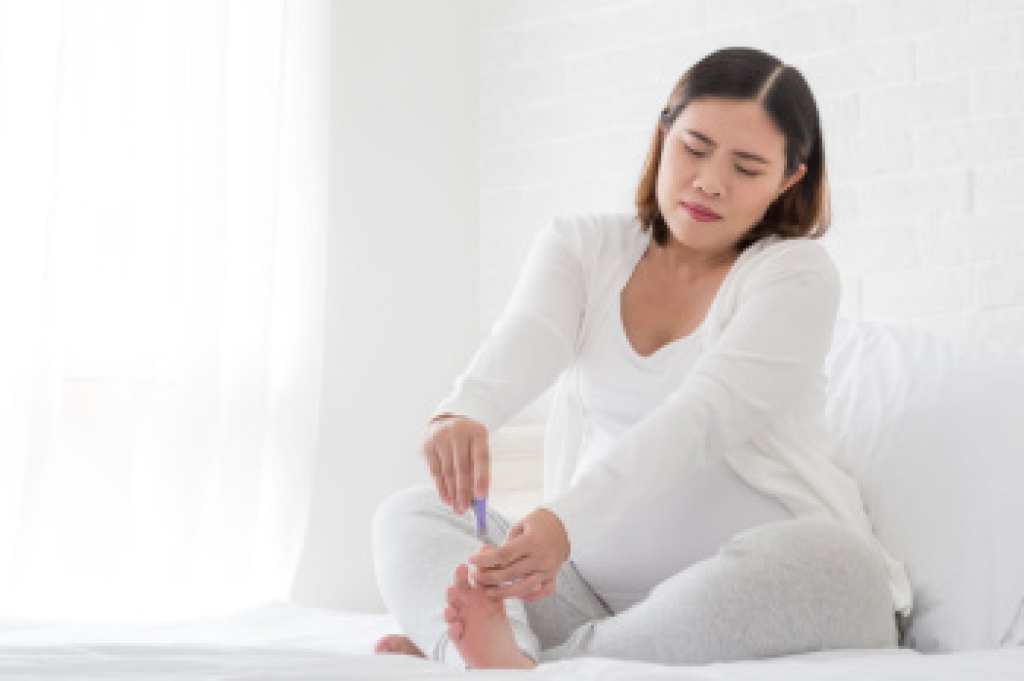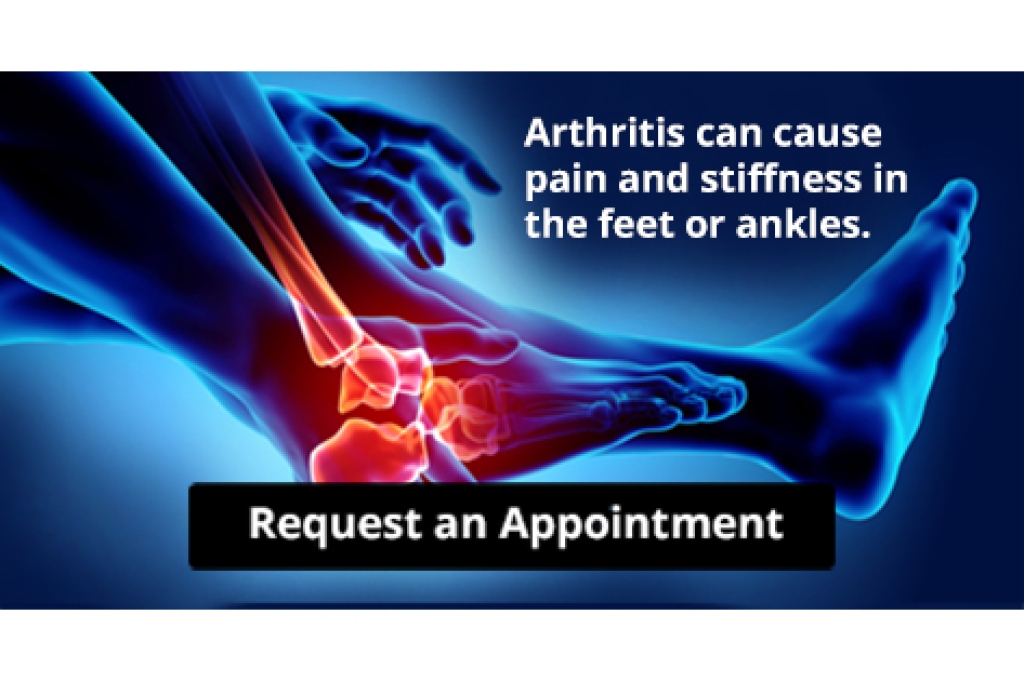Connect With Us
Blog
Blog
Early Signs That an Ingrown Toenail Needs Attention

An ingrown toenail often begins with subtle changes that become more uncomfortable over time. Tenderness along one side of the nail may be the first clue, especially if the skin feels sore when pressed or rubbed by a sock or shoe. Redness, swelling, and warmth can follow as the nail edge begins to press into the surrounding skin. Some people notice a feeling of pressure or a small area of firm, irritated tissue that develops near the corner of the nail. Clear or yellow drainage may appear if the skin becomes inflamed. Pain that increases while walking or wearing closed shoes is another sign the problem is progressing. Paying attention to these early changes helps prevent deeper infection and protects overall foot health. If you have persistent pain, swelling, or drainage with an ingrown toenail, it is suggested that you see a podiatrist for effective treatment solutions.
Ingrown toenails may initially present themselves as a minor discomfort, but they may progress into an infection in the skin without proper treatment. For more information about ingrown toenails, contact one of our podiatrists of Advanced Foot Specialists. Our doctors can provide the care you need to keep you pain-free and on your feet.
Ingrown Toenails
Ingrown toenails are caused when the corner or side of a toenail grows into the soft flesh surrounding it. They often result in redness, swelling, pain, and in some cases, infection. This condition typically affects the big toe and may recur if it is not treated properly.
Causes
- Improper toenail trimming
- Genetics
- Improper shoe fitting
- Injury from pedicures or nail picking
- Abnormal gait
- Poor hygiene
You are more likely to develop an ingrown toenail if you are obese, have diabetes, arthritis, or have any fungal infection in your nails. Additionally, people who have foot or toe deformities are at a higher risk of developing an ingrown toenail.
Symptoms
Some symptoms of ingrown toenails are redness, swelling, and pain. In rare cases, there may be a yellowish drainage coming from the nail.
Treatment
Ignoring an ingrown toenail can have serious complications. Infections of the nail border can progress to a deeper soft-tissue infection, which can then turn into a bone infection. You should always speak with your podiatrist if you suspect you have an ingrown toenail, especially if you have diabetes or poor circulation.
If you have any questions, please feel free to contact our offices located in Rockwall, Greenville, Dallas, Sachse, and Lewisville, TX . We offer the newest diagnostic and treatment technologies for all your foot care needs.
A Podiatrist's Role in Finding Plantar Fasciitis Relief

Plantar fasciitis develops when the thick band of tissue along the bottom of the foot becomes irritated. This irritation is often caused by obesity, increased physical activity, demanding occupations, pregnancy, or natural foot structure, such as flat feet or high arches. Symptoms include sharp heel pain, stiffness, and discomfort that is most noticeable during the first steps in the morning. A podiatrist can provide expert evaluation, create custom treatment plans, and offer options such as supportive devices, advanced therapies, and guidance on activity changes to relieve pain and prevent future flare-ups. If you are living with persistent heel pain, it is suggested that you promptly schedule an appointment with a podiatrist to regain comfort and return to the activities you enjoy.
Plantar fasciitis is a common foot condition that is often caused by a strain injury. If you are experiencing heel pain or symptoms of plantar fasciitis, contact one of our podiatrists from Advanced Foot Specialists. Our doctors can provide the care you need to keep you pain-free and on your feet.
What Is Plantar Fasciitis?
Plantar fasciitis is one of the most common causes of heel pain. The plantar fascia is a ligament that connects your heel to the front of your foot. When this ligament becomes inflamed, plantar fasciitis is the result. If you have plantar fasciitis you will have a stabbing pain that usually occurs with your first steps in the morning. As the day progresses and you walk around more, this pain will start to disappear, but it will return after long periods of standing or sitting.
What Causes Plantar Fasciitis?
- Excessive running
- Having high arches in your feet
- Other foot issues such as flat feet
- Pregnancy (due to the sudden weight gain)
- Being on your feet very often
There are some risk factors that may make you more likely to develop plantar fasciitis compared to others. The condition most commonly affects adults between the ages of 40 and 60. It also tends to affect people who are obese because the extra pounds result in extra stress being placed on the plantar fascia.
Prevention
- Take good care of your feet – Wear shoes that have good arch support and heel cushioning.
- Maintain a healthy weight
- If you are a runner, alternate running with other sports that won’t cause heel pain
There are a variety of treatment options available for plantar fasciitis along with the pain that accompanies it. Additionally, physical therapy is a very important component in the treatment process. It is important that you meet with your podiatrist to determine which treatment option is best for you.
If you have any questions, please feel free to contact our offices located in Rockwall, Greenville, Dallas, Sachse, and Lewisville, TX . We offer the newest diagnostic and treatment technologies for all your foot care needs.
Balance Exercises Can Help Prevent Falls

Good balance depends on the ability of the feet and ankles to sense position and react quickly to changes in surface or movement. This awareness, called proprioception, helps the body maintain stability and avoid falls. When proprioception is weakened by aging, foot injuries, or conditions that reduce nerve sensitivity, people are more likely to lose their balance and become at risk for falling. Balance exercises that strengthen the feet and ankles can improve coordination and control by retraining the small muscles and nerves that help the body adapt to uneven ground. A podiatrist can assess gait, range of motion, and nerve response to determine how balance training can improve foot function and prevent future injury. If you have sustained a foot injury from falling because of balance issues, it is suggested that you schedule an appointment with a podiatrist who can treat various foot injuries, and suggest specific balance exercises.
Preventing falls among the elderly is very important. If you are older and have fallen or fear that you are prone to falling, consult with one of our podiatrists from Advanced Foot Specialists. Our doctors will assess your condition and provide you with quality advice and care.
Every 11 seconds, an elderly American is being treated in an emergency room for a fall related injury. Falls are the leading cause of head and hip injuries for those 65 and older. Due to decreases in strength, balance, senses, and lack of awareness, elderly persons are very susceptible to falling. Thankfully, there are a number of things older persons can do to prevent falls.
How to Prevent Falls
Some effective methods that older persons can do to prevent falls include:
- Enrolling in strength and balance exercise program to increase balance and strength
- Periodically having your sight and hearing checked
- Discuss any medications you have with a doctor to see if it increases the risk of falling
- Clearing the house of falling hazards and installing devices like grab bars and railings
- Utilizing a walker or cane
- Wearing shoes that provide good support and cushioning
- Talking to family members about falling and increasing awareness
Falling can be a traumatic and embarrassing experience for elderly persons; this can make them less willing to leave the house, and less willing to talk to someone about their fears of falling. Doing such things, however, will increase the likelihood of tripping or losing one’s balance. Knowing the causes of falling and how to prevent them is the best way to mitigate the risk of serious injury.
If you have any questions, please feel free to contact our offices located in Rockwall, Greenville, Dallas, Sachse, and Lewisville, TX . We offer the newest diagnostic and treatment technologies for all your foot care needs.
Causes of Black Toenails

A black toenail may appear alarming, and its causes can range from minor to more serious conditions. Repetitive trauma, such as pressure from shoes that do not fit properly, can cause bleeding beneath the toenail, which leads to dark discoloration. A blunt injury, like dropping a heavy object on the foot, can also damage the nail bed and cause blood to pool under the nail. Fungal infections may contribute as well, where debris buildup can turn the nail dark instead of the typical yellow or white. In some cases, pigmentation changes or underlying health conditions like diabetes, anemia, or heart disease can be factors. A podiatrist can identify the exact cause, provide treatment to address pain, infection, or nail damage, and determine if further testing is needed. If your toenail turns black in color, it is suggested that you schedule an appointment with a podiatrist for an exam and appropriate treatment.
Toe pain can disrupt your daily activities. If you have any concerns, contact one of our podiatrists of Advanced Foot Specialists. Our doctors can provide the care you need to keep you pain-free and on your feet.
What Causes Toe Pain?
Most severe toe pain is caused due to a sports injury, trauma from dropping something heavy on the toe, or bumping into something rigid. Other problems can develop over time for various reasons.
Toe pain can be caused by one or more ailments. The most common include:
- Trauma
- Sports injury
- Wearing shoes that are too tight
- Arthritis
- Gout
- Corns and calluses
- Hammertoe
- Bunions
- Blisters
- Ingrown toenails
- Sprains
- Fractures (broken bones)
- Dislocations
When to See a Podiatrist
- Severe pain
- Persistent pain that lasts more than a week
- Signs of infection
- Continued swelling
- Pain that prevents walking
Diagnosis
In many cases the cause of toe pain is obvious, but in others, a podiatrist may want to use more advanced methods to determine the problem. These can range from simple visual inspections and sensation tests to X-rays and MRI scans. Prior medical history, family medical history, and any recent physical traumatic events will all be taken into consideration for a proper diagnosis.
Treatment
Treatments for toe pain and injuries vary and may include shoe inserts, padding, taping, medicines, injections, and in some cases, surgery. If you believe that you have broken a toe, please see a podiatrist as soon as possible.
If you have any questions please contact our offices located in Rockwall, Greenville, Dallas, Sachse, and Lewisville, TX . We offer the newest diagnostic and treatment technologies for all your foot and ankle needs.
Blog Archives
- 2025
- 2024
- 2023

